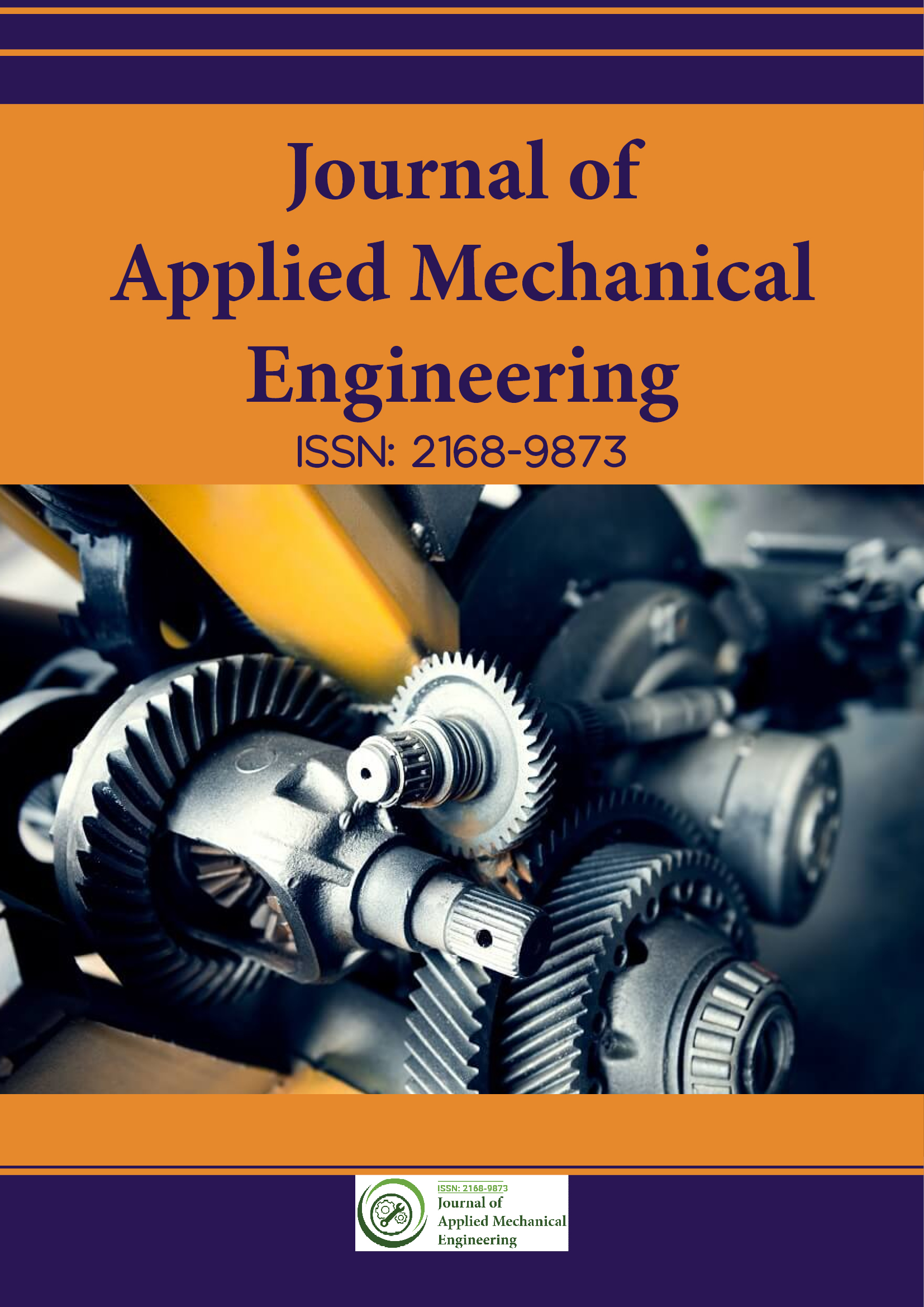Indexed In
- Genamics JournalSeek
- JournalTOCs
- CiteFactor
- RefSeek
- Hamdard University
- EBSCO A-Z
- OCLC- WorldCat
- Publons
- Google Scholar
Useful Links
Share This Page
Journal Flyer

Open Access Journals
- Agri and Aquaculture
- Biochemistry
- Bioinformatics & Systems Biology
- Business & Management
- Chemistry
- Clinical Sciences
- Engineering
- Food & Nutrition
- General Science
- Genetics & Molecular Biology
- Immunology & Microbiology
- Medical Sciences
- Neuroscience & Psychology
- Nursing & Health Care
- Pharmaceutical Sciences
Perspective - (2025) Volume 14, Issue 1
Cryogenics in Mechanical Engineering: Navigating the Frozen Frontiers of Innovation
Mouna Remyly*Received: 14-Nov-2023, Manuscript No. JAME-23-23904; Editor assigned: 17-Nov-2023, Pre QC No. JAME-23-23904 (PQ); Reviewed: 01-Dec-2023, QC No. JAME-23-23904; Revised: 03-Jan-2025, Manuscript No. JAME-23-23904 (R); Published: 13-Jan-2025, DOI: 10.35248/2168-9873.25.14.522
Description
Cryogenics, the study and application of materials and phenomena at extremely low temperatures, has emerged as a frontier technology in the realm of mechanical engineering. Operating in the temperature range below -150 degrees Celsius (-238 degrees Fahrenheit), cryogenics unlocks a myriad of possibilities for enhancing materials, expanding the capabilities of machinery, and exploring uncharted territories of innovation. This article delves into the fascinating world of cryogenics, exploring its applications, challenges, and the transformative impact it has on mechanical engineering.
Understanding cryogenics
Cryogenics involves the study of materials and their behaviour at temperatures far below those encountered in everyday life. Liquid nitrogen and liquid helium are commonly used cryogenic fluids, with temperatures as low as -196 degrees Celsius (-321 degrees Fahrenheit) and -269 degrees Celsius (-452 degrees Fahrenheit), respectively. These extreme conditions provide engineers with a unique set of tools to manipulate materials and design mechanical systems with enhanced performance.
Applications
Superconductivity and magnetics: One of the most significant contributions of cryogenics to mechanical engineering is in the field of superconductivity. Certain materials exhibit zero electrical resistance at cryogenic temperatures, enabling the creation of superconducting magnets with unparalleled magnetic strength. Superconducting magnets find applications in Magnetic Resonance Imaging (MRI) machines, particle accelerators, and magnetic levitation (Maglev) trains, showcasing the transformative impact of cryogenics on modern technology.
Materials processing and treatment: Cryogenic temperatures are employed in materials processing and treatment to enhance mechanical properties. Cryogenic treatment can improve the hardness and wear resistance of materials, making them ideal for applications in cutting tools, gears, and other components subjected to extreme conditions. This process, known as cryogenic tempering, alters the microstructure of materials, resulting in enhanced mechanical performance.
Space exploration: Cryogenics plays a crucial role in the propulsion systems of rockets used in space exploration. Liquid oxygen and liquid hydrogen, stored at cryogenic temperatures, are commonly employed as propellants due to their high energy density. The ability to handle and store these cryogenic fluids is fundamental to the success of space missions, making cryogenics an integral part of the mechanical engineering behind space exploration.
Cryogenic cooling in electronics: The cooling of electronic components is a critical consideration in modern electronics design. Cryogenic cooling, using materials like liquid nitrogen, can significantly reduce the operating temperatures of electronic devices, leading to improved performance and efficiency. This is particularly important in applications such as supercomputing and quantum computing, where maintaining low temperatures is essential for optimal functionality.
Challenges and considerations
While cryogenics offers a plethora of opportunities for innovation in mechanical engineering, it also presents unique challenges and considerations that engineers must address. At cryogenic temperatures, materials undergo significant changes in behavior. Mechanical properties, such as ductility and strength, can be altered, requiring careful consideration in the design and selection of materials for cryogenic applications. Understanding the effects of low temperatures on materials is crucial to ensure the reliability and durability of mechanical systems. Maintaining cryogenic temperatures poses challenges in terms of thermal insulation. Cryogenic fluids need to be stored and transported in well-insulated containers to prevent heat transfer from the surrounding environment. Developing efficient insulation materials and techniques is essential to minimize energy consumption and maintain the stability of cryogenic systems. The energy-intensive nature of cryogenic processes, especially the liquefaction of gases, presents economic challenges. Engineers must balance the potential benefits of cryogenic applications with the associated energy costs. Ongoing research focuses on improving the efficiency of cryogenic processes to make them more economically viable for widespread adoption. Working with extremely low temperatures introduces safety considerations. The risk of frostbite and the potential for materials to become brittle at cryogenic temperatures necessitate strict safety protocols. Engineers and operators must be well-trained to handle cryogenic fluids safely, minimizing the risks associated with their use.
Future directions and innovations
Quantum computing: Cryogenics plays a pivotal role in the development of quantum computers. Quantum bits or qubits, require extremely low temperatures to maintain their quantum coherence. Cryogenic cooling systems are integral to the operation of quantum computers, representing a groundbreaking application of cryogenics in the field of computing.
Cryopreservation in biomedicine: The field of cryogenics intersects with biomedicine in the area of cryopreservation. Preserving biological materials, such as cells and tissues, at cryogenic temperatures allows for long-term storage and transportation. This has applications in organ transplantation, cell therapy and the preservation of genetic material.
Conclusion
Cryogenics has created advances in mechanical engineering and created opportunities for new possibilities in materials science, space exploration, and electronics. In addition to revolutionizing current technologies, the capacity to work at extremely low temperatures has created the way for innovative advances in quantum computing and biology. Despite the challenges posed by the unique characteristics of materials at cryogenic temperatures, ongoing research and development continue to expand the applications of cryogenics, ensuring its continued impact on the future of mechanical engineering.
Citation: Remyly M (2025) Cryogenics in Mechanical Engineering: Navigating the Frozen Frontiers of Innovation. J Appl Mech Eng. 14:522.
Copyright: © 2025 Remyly M. This is an open-access article distributed under the terms of the Creative Commons Attribution License, which permits unrestricted use, distribution, and reproduction in any medium, provided the original author and source are credited.

